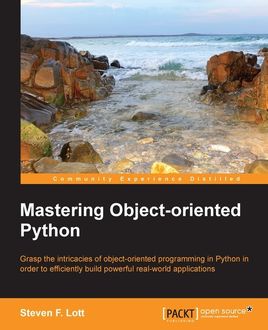Mastering Object-oriented Python
792 halaman cetak
- Tahun publikasi
- 2014
- Penerbit
- Packt Publishing
Kutipan
- DDaudalagidmembuat kutipan2 tahun yang laluFor many types, this function makes an attempt to return a string that would yield an object with the same value when passed to eval().
- DDaudalagidmembuat kutipan2 tahun yang laluWe initialize an object by implementing the __init__() method. When an object is created, Python first creates an empty object and then calls the __init__() method for that new object. This method function generally creates the object's instance variables and performs any other one-time processing.
- DDaudalagidmembuat kutipan2 tahun yang laluWe can see that a class is an object of the class named type and that the base class for our new class is the class named object.
fb2epub
Seret dan letakkan file Anda
(maksimal 5 sekaligus)


